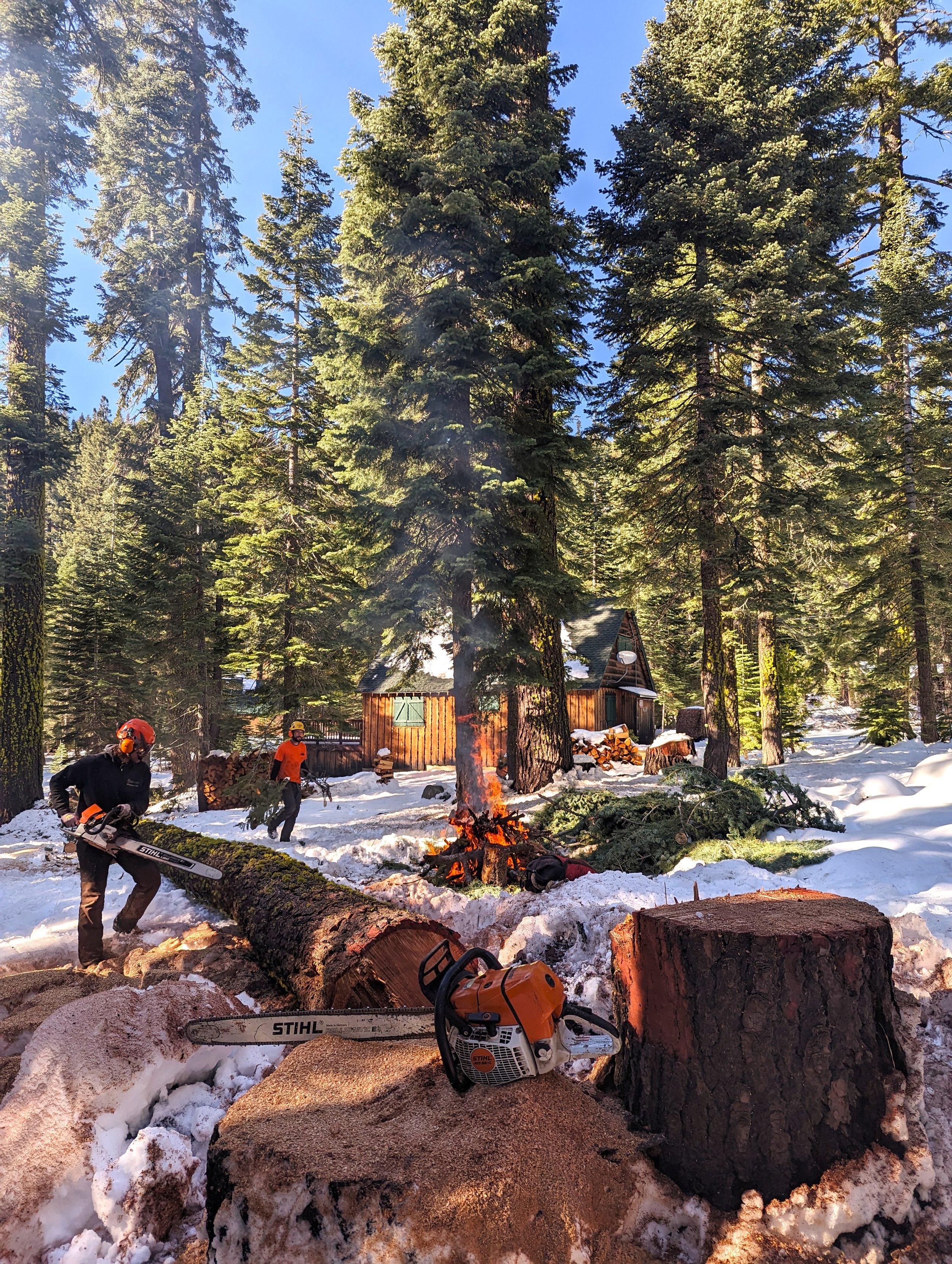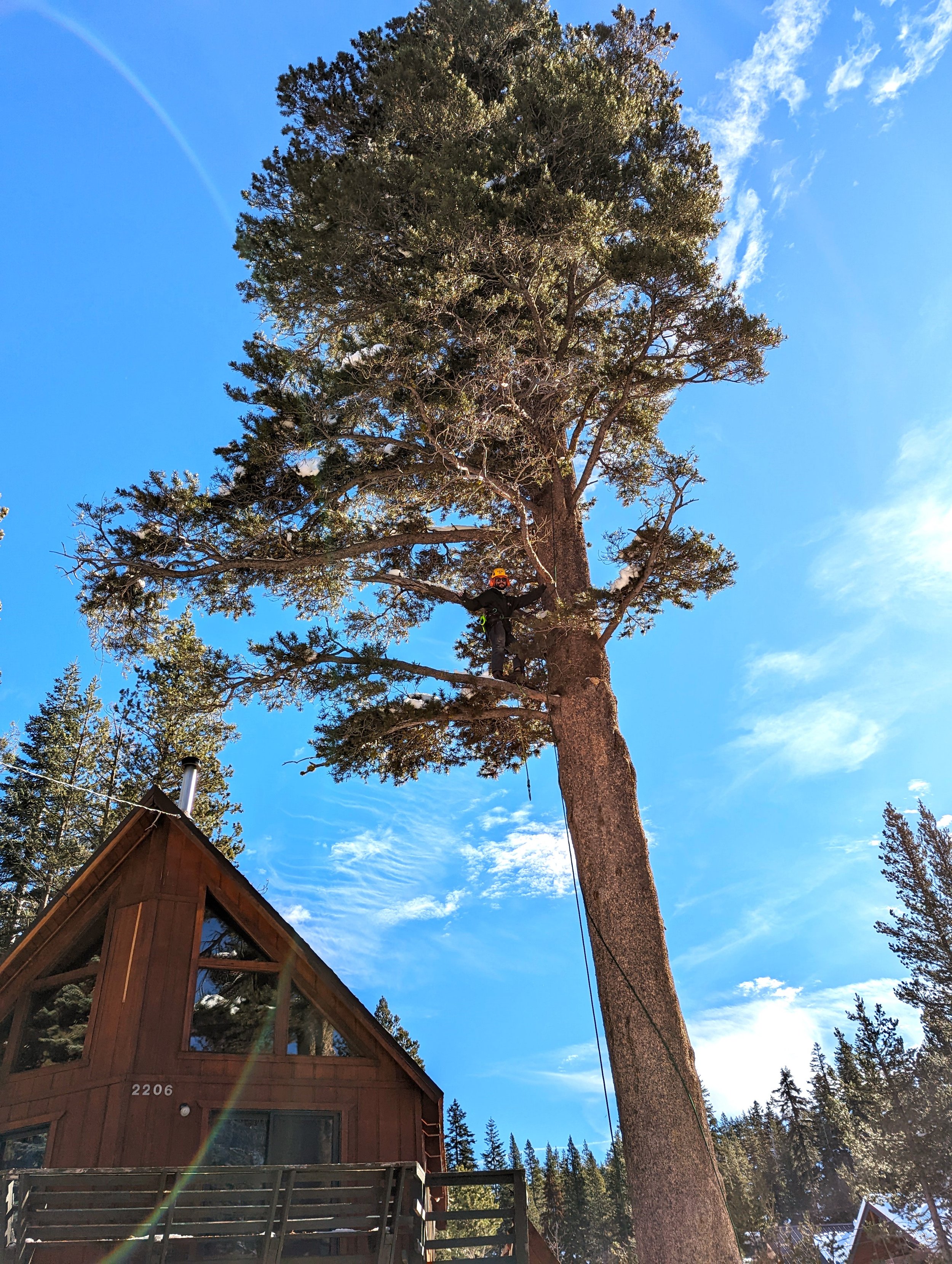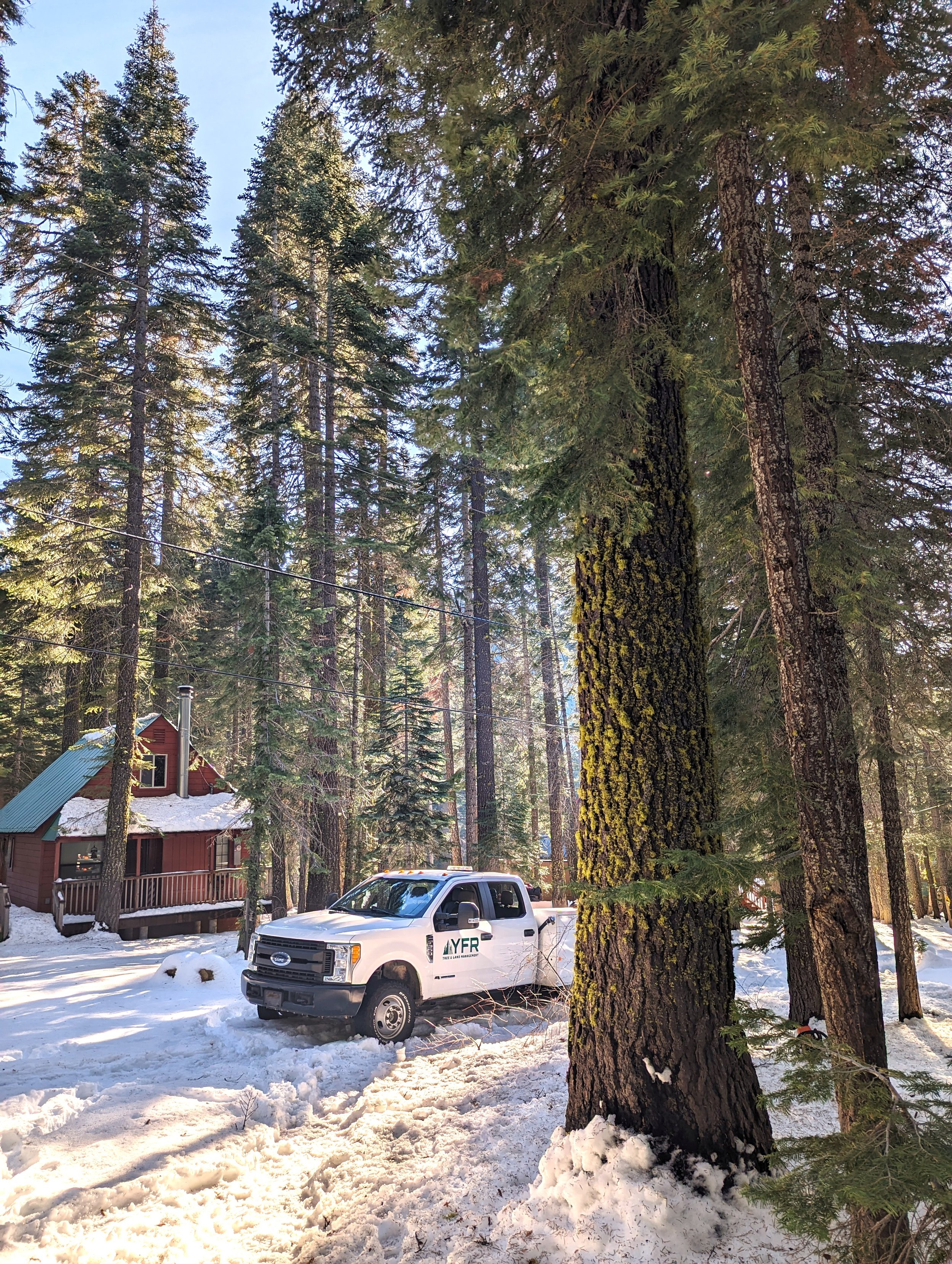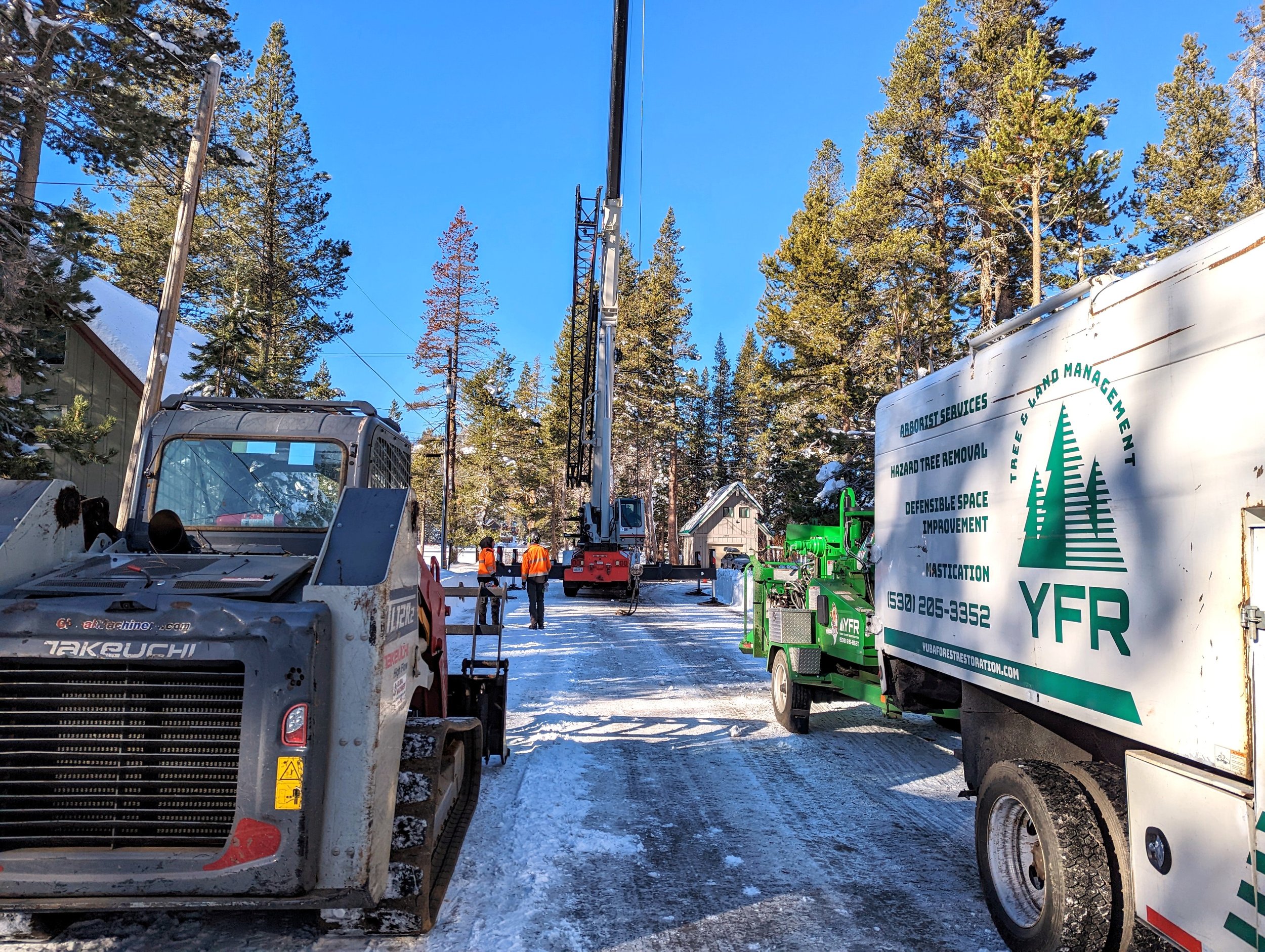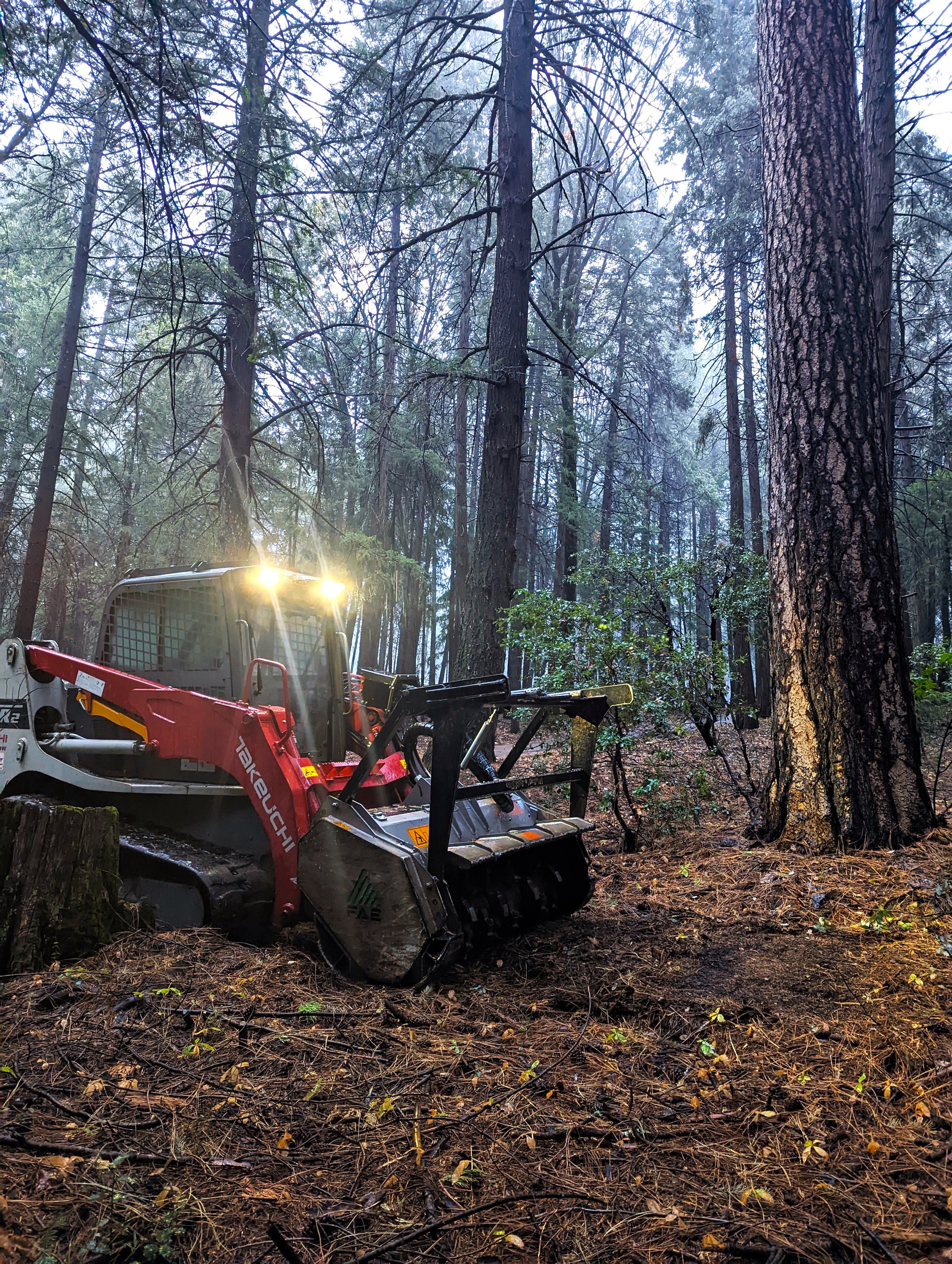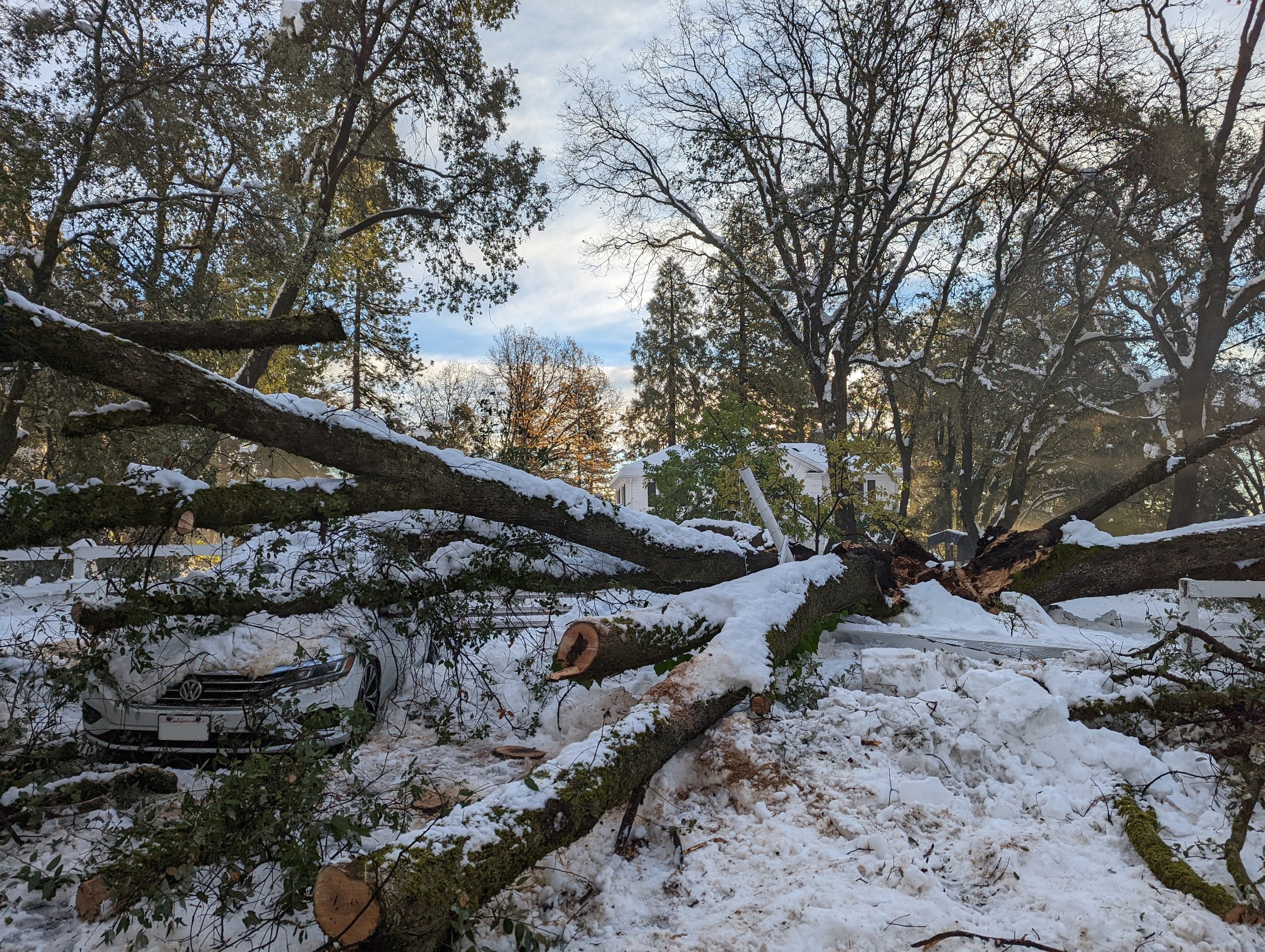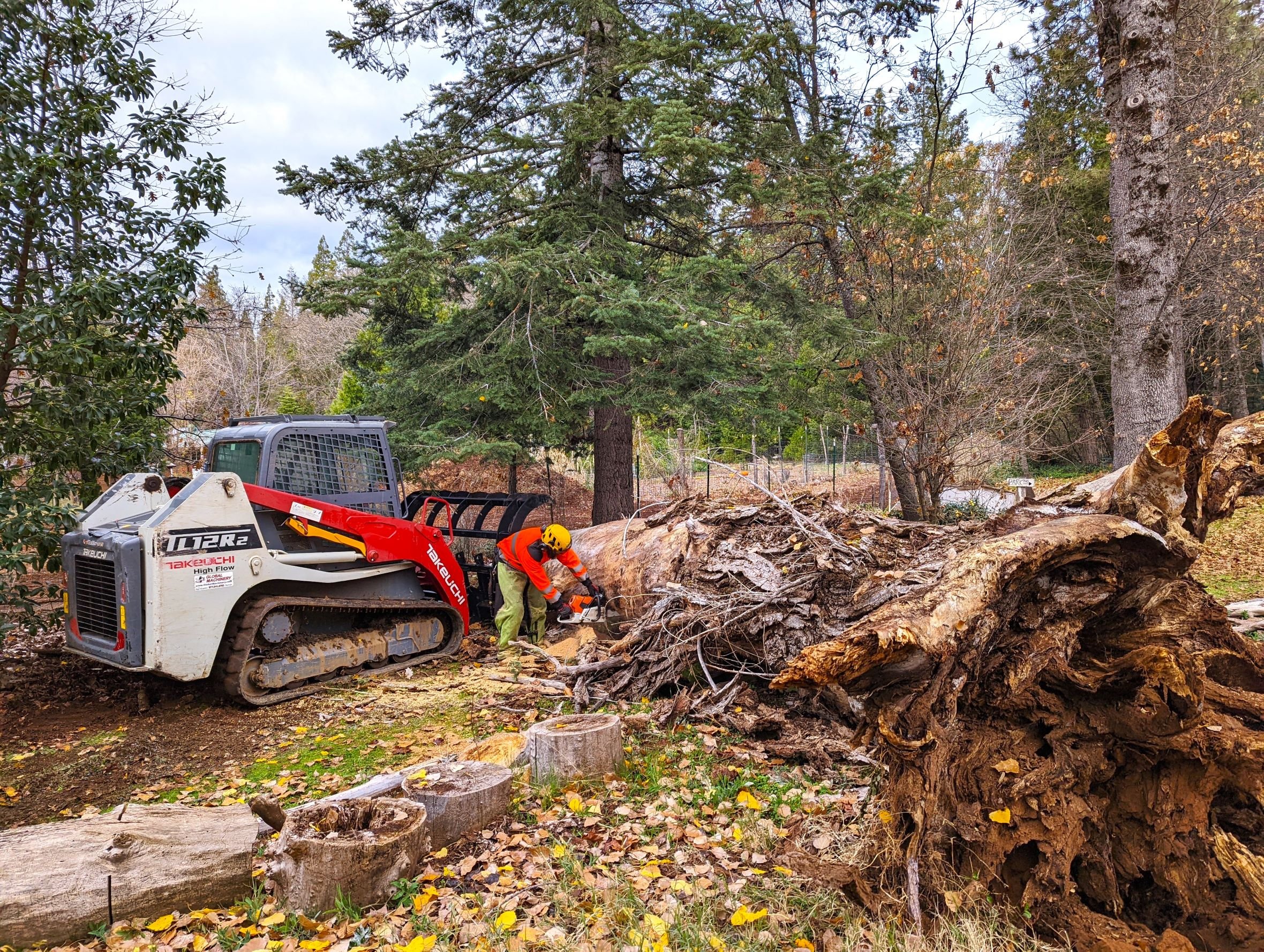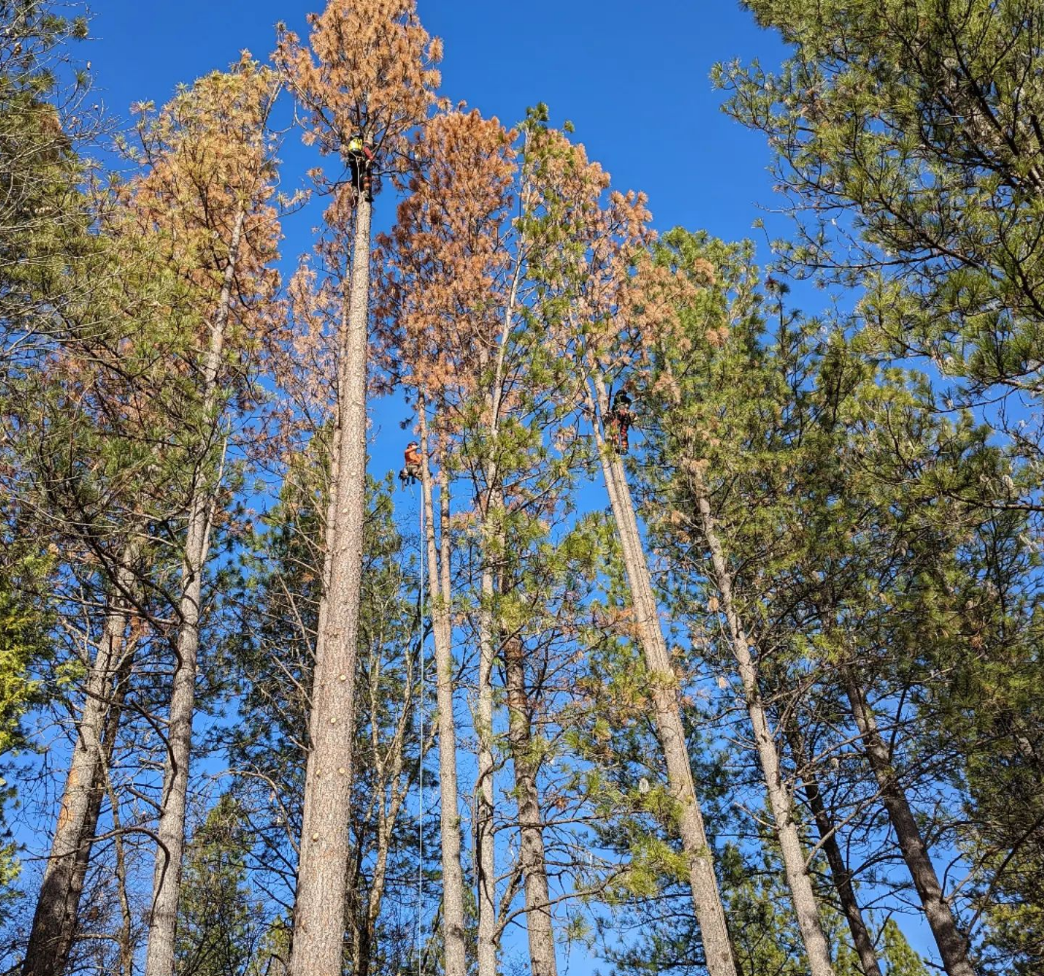YFR Tree & Land Management participated in a Lower Colfax Firewise Community (LCFC) prescribed fire. This burn was organized by property owner, Matt Miller, with Registered Professional Forester and prescribed fire, Dario Davidson. Dario is a key member of the Yuba Bear Burn Cooperative, whose mission is to empower private landowners through education to safely and legally practice good fire.
Why winter is the best time of year for tree trimming and removal
Most property owners are not thinking much about tree care in the winter months. Deciduous trees have already put on their autumn show, the days are short and cold, so time spent outside is less. Plus, it’s hard to not get wrapped up in all of the holiday madness. In our region, this is also the time we tend to get the most extreme weather. Neglected tree maintenance is compounded by these weather events in the form of tree and branch failures, damaging property and causing power outages.
How do I ensure that my trees are in good shape heading into the stormy season? ❄️
It is advised that you have a qualified arborist inspect the trees on your property frequently. A qualified arborist is able to spot defects and hazardous conditions, and make recommendations prior to them becoming an issue. Almost all of the failures that we come across could have been prevented if the trees were examined by an arborist prior. Unfortunately, when trees lose large limbs in storms, the damage is often so great that the tree will never recover. It is important to remember that trees need periodic maintenance to stay strong and healthy. If you think that your trees are in need of work, you can call us for a free estimate. We can create an individual pruning plan for your property and keep your trees healthy into the future.
How often do my trees need pruned? ⏳
Of course, the pruning interval varies among species and site conditions, but young trees generally need pruning every 2-5 years, and mature trees every 3-10 years. Some trees like fruit trees however, may need to be pruned annually.
When is the best time of year to prune trees? 📅
We often get asked this question. You might be surprised that the best time of year to prune
What are the advantages of doing tree pruning and removals in the winter? ⚖️
In the winter, the leaves are gone on deciduous trees, making the canopy and tree structure more visible. This allows the arborist to better assess the tree for defects and other hazardous conditions that may be present, as well as make recommendations to mitigate them.
Tree workers aloft in the tree can work more efficiently and safer as limbs used for life support are fully visible.
Pruning during the dormant season gives trees time to heal and compartmentalize their wounds prior to the spring flush of new growth.
Damaging pests are also dormant this time of year. In the Sierra Nevada, the bark beetle is a frequent cause of pine tree mortality. Fresh pruning cuts and material, such as logs, rounds, or woodchips ,left onsite can bean attractant for this destructive beetle and can possibly lead to an infestation and further loss of trees. Whenever possible, we schedule our work on pines in the winter months.
Do you offer tree work in the winter? What about the cold and rain? 👍
Of course! Our team of local full-time employees works throughout the year to care for the trees and forests in our community. Our job keeps us very active, so the cold doesn’t bother us. We don’t mind a bit of rain or snow. The right gear goes a long way to keeping our team comfortable, so we are able to work in all but the worst of weather.
Mastication: a cost-effective treatment for reducing fuels on a larger scale
Folks in the region are beginning to understand the concept of “fuels” and what it means to manage your property to keep fuels at a healthy level. Without the natural component of fire in the Sierra Nevada, the amount of vegetation growing on our properties can quickly reach an almost unmanageable level. Excess vegetation means more fuel for a fire, and the more fuel the more intense the fire will burn.
If you want to have brush removed and thinning done on your property, mastication may be the most cost-effective treatment option.
What is Mastication?
Also known as “forestry mulching”, mastication is a method of vegetation management that is generally completed with a skid-steer (think “bobcat” on tracks) or excavator machine. A special attachment is able to mulch down smaller trees and brush leaving finer debris similar to what would come from a chipper. This helps to reduce fuels in overgrown forests and is often the most cost-effective treatment option for larger areas.
Our Takeuchi TL-12 masticator on a project in Grass Valley, CA
Benefits of masticating property:
Fuels reduction. Reducing ladder fuels helps to moderate fire behavior and helps reduce risk to structures.
Less severe fire behavior can provide an opportunity for first responders to access the fire safely
Often the remaining tress are “limbed up” as part of this service, which creates separation of the ground fuels from the tree canopy. This further reduces the risk of a damaging crown fire
By reducing unfavorable brush and smaller trees, the remaining trees will enjoy reduced competition for light and water
Improved watershed function-more water available to remaining trees and increased runoff. Studies have linked forest thinning to increased water availability.
Remaining trees will grow with more vigor and also be more resilient to fire, drought, and beetle outbreaks.
Many find that they are able to enjoy their property like they couldn’t before. The resulting “park like setting” allows increased opportunities of viewing wildlife and much easier walking on the property.
A property we masticated in Nevada City near Deer Creek
Forest stewardship is the key to managing fire risk on your property and protecting it into the future
Fire is a natural component of the Sierra Nevada, and has been shaping these forests for a long time. Many tree species have adapted to fire with thick, fire-resistant bark and foliage. We know that local native people benefited from utilizing fire regularly to manage forests. Historically, frequent low-severity fires helped lessen forest fuel loads and reduce the amount of smaller trees and seedlings. Nowadays, climate change plus over a century of fire suppression has given way to forests that contain hazardous levels of vegetation and are very susceptible to drought, insects, and disease.

